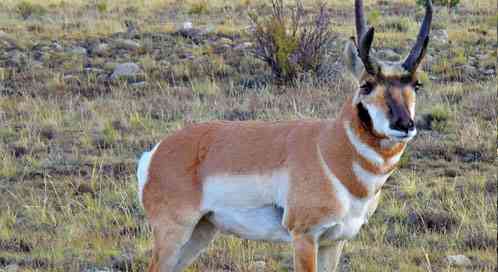Sonoran Pronghorn
With an oblong face and a black nose splotch, the Sonoran pronghorn stands out against the cacti-strewn landscape of the American Southwest. It is also one of the rarest of the five subspecies of American pronghorn. Smaller and lighter than its cousins, it shares their ability to blaze across the landscape as fast as 60 miles an hour. But it was never as numerous. This makes their recovery all the more difficult.
Federally protected since 1967—after decades of hunting and habitat destruction reduced their numbers by as much as 99 percent—these tawny, goat-sized creatures still almost vanished without a trace in 2002 when a severe drought wiped out all but 21 animals. Today only about 160 survive in the United States, thanks to federal and state intervention that included a successful captive-breeding program and the reintroduction of a second population to the Kofa National Wildlife Refuge in Arizona.
Because pronghorn range widely and are particularly sensitive to human disturbance and habitat health, ensuring their survival helps the many other species of the Sonoran Desert, considered one of the most biologically diverse deserts in the world.
But with such small numbers in the wild, even the fastest land mammal on the continent can’t win this race against time—unless we move more quickly to help it.
MAKING A DIFFERENCE
One of the most endangered land mammals in North America, the Sonoran pronghorn’s chances of surviving climate change without continued intervention may be slim. As climate change makes their habitat even drier and hotter, it will likely be harder for pronghorn fawns to survive after their first weeks if the nutrient-rich desert shrubs they need are withered and dead. But we can help by minimizing the threats we can control.
To this end, Defenders worked to remove illegal fencing on federal lands, which can entangle pronghorn, and to limit livestock grazing, which reduces the amount of forage available for pronghorn and other wildlife. And following a Defenders’ lawsuit, the U.S. military adjusted its operations on the Barry M. Goldwater Range and Yuma Proving Grounds in Arizona—3 million acres of core pronghorn range—by screening for pronghorn and delaying or moving its bombing, artillery and flight maneuvers when pronghorn are present.
Only select articles from Defenders are available online. To receive 4 issues annually of the full award-winning magazine, become a member of Defenders of Wildlife!

